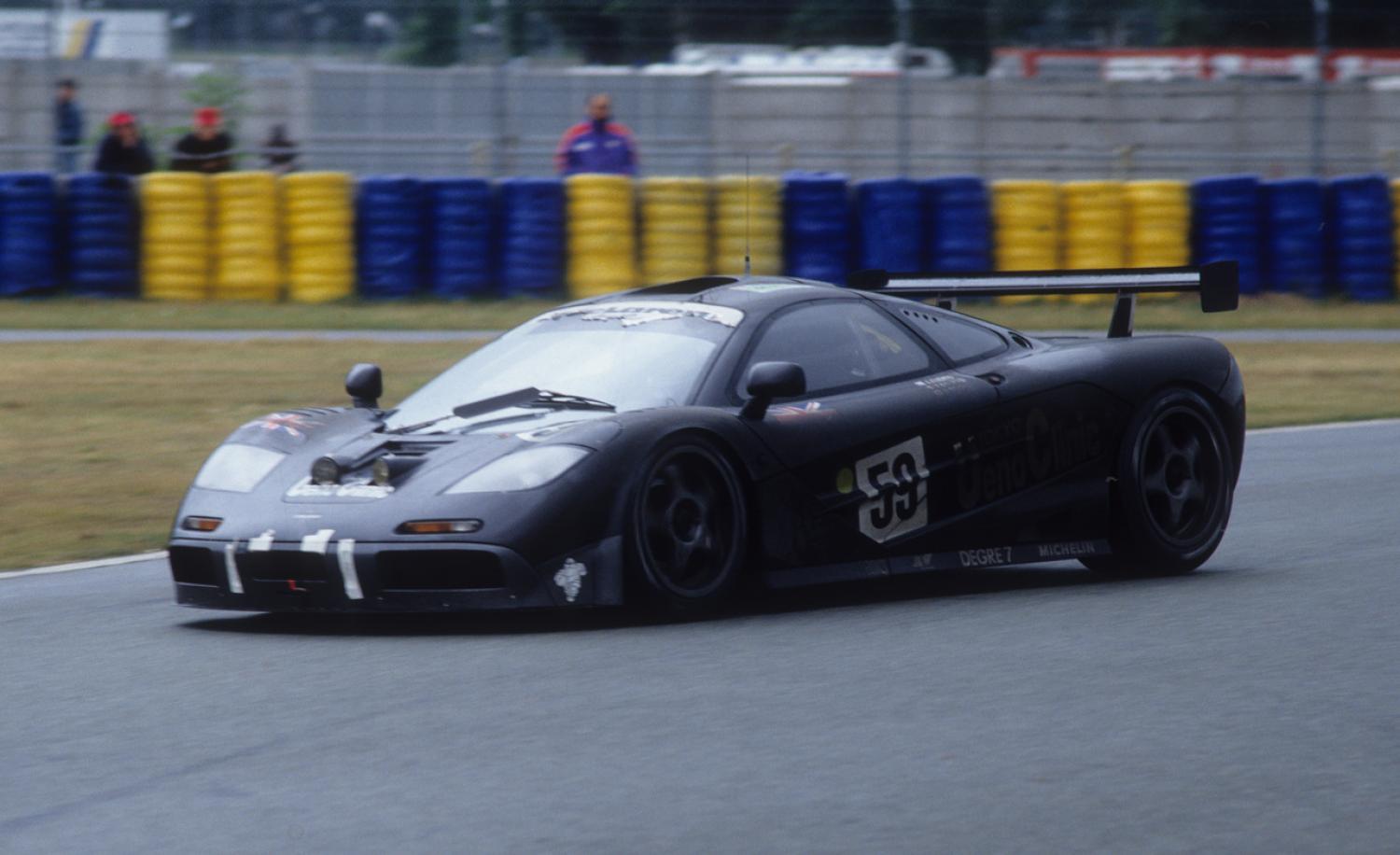24 HOURS CENTENARY – MAKES, MARQUES and IMPRINTS ⎮ Both as a driver and constructor, Bruce McLaren (1937-1970) is considered a legend at Le Mans. Twenty-nine years after his win at the wheel of a Ford Mk II in 1966, a car bearing his name, the first high-performance road GT called F1, claimed the top step on the podium for its rookie participation in 1995.
When the F1 car intended for the 24 Hours was designed, McLaren was at the top of its game in Formula 1 after earning eight consecutive titles between 1988 and 1991. The marque decided to apply itself to a new challenge, taking on Ferrari with a high-performance touring car designed by Gordon Murray, one of the most imaginative engineers of the era.
From Monaco to Le Mans
The McLaren F1 was unveiled at the 1992 Monaco Grand Prix. Powered by a 6-litre V12 engine specially designed by BMW, the car had the unique feature of three front seats, with a central driving position shifted forwards. The idea had been realised decades earlier after World War II by Jean-Pierre Wimille for a road car of his own design, which remained a prototype after his death in 1949. In all, 106 McLaren F1s were produced between 1993 to 1998, including 28 destined for competition.
The car's racing version, named the F1 GTR, immediately aroused the interest of several teams and drivers. On 17 June 1995, seven took the start in the 63rd 24 Hours. Remarkably nimble in rainy weather, it was a big surprise when the car driven by Yannick Dalmas/JJ Lehto/Masanori Sekiya won the race. Four other F1 GTRs made it to the chequered flag, including three in the top 5 (3rd, 4th and 5th). At the end of 1995, McLaren celebrated this unfettered success with the production of a limited series of five cars (as a nod to the five F1 GTRs classified), called F1 LM.
The F1 GTR confirmed its reliability in 1996 with five top 10 finishes led by Peter Kox/John Nielsen/Thomas Bscher (4th). Two F1 GTRs were entered by the Bigazzi team, a long-standing partner of BMW (8th and 11th).
The following year, BMW increased its involvement with two F1 GTRs directly fielded by BMW Motorsport. The car shared by Peter Kox/Roberto Ravaglia/Éric Hélary was the only one of the five F1 GTRs to finish the race (3rd). BMW Motorsport Director (1999-2011) Mario Theissen: "This car was, after the BMW M1, the second supercar in which our marque was involved, and its engine was a benchmark for us for the next five years. The engine proved to be very competitive in 1995, just like in 1996 and 1997. So we were able to build a prototype around it."
The prototype took the start in the 24 Hours in 1998, the year of the F1 GTR's final appearance for which it made it into the top 5 once again thanks to Steve O'Rourke/Bill Auberlen/Tim Sugden (4th). The other car entered was shared by two future pillars of Audi's adventures at Le Mans, Italian drivers Emanuele Pirro and Dindo Capello, but was forced to retire after an incident.
The F1 and its drivers
Winners' circle - In addition to 1995 victors Yannick Dalmas, JJ Lehto and Masanori Sekyia, the McLaren F1 GTR was entrusted to nine other previous or future winners of the 24 Hours: Derek Bell, Mark Blundell, David Brabham, Dindo Capello, Éric Hélary, Jochen Mass, John Nielsen, Emanuele Pirro and Andy Wallace. These 12 drivers boast a total of 26 victories at Le Mans.
In 1995, Lehto and Sekyia became the first Finnish driver and first Japanese driver, respectively, to win the race. They were accompanied on the third step of the podium by Derek Bell along with his son Justin and Andy Wallace.
Formula 1, two wheels and an oval circuit - A prestigious trio finished eighth at the 1996 24 Hours: Brazilian driver Nelson Piquet (F1 world champion in 1981, 1983 and 1987), Venezuelan driver Johnny Cecotto (moto racing world champion in 1975 and 1978, brilliantly competing in supertouring car) and American driver Danny Sullivan (1985 Indianapolis 500 winner).
Two gentlemen for the F1 - In 1995, gentleman driver and classic car auctioneer Hervé Poulain took the start in his ninth 24 Hours at the wheel of a McLaren F1 GTR decorated by the sculptor César. He finished 13th along with Marc Sourd and Jean-Luc Maury-Laribière. Three years later, Pink Floyd manager Steve O'Rourke (1940-2003) clinched his best result at Le Mans (4th overall).
McLaren is now the only marque to win the motorsport Triple Crown: the 24 Hours of Le Mans, the Formula 1 World Championship and the Indianapolis 500. Tribute will be paid to this extraordinary accomplishment on 28 May with three commemorative liveries adorning the three single-seaters entered by McLaren at Indianapolis.
PHOTOS (Copyright - ACO/Archives): LE MANS (SARTHE, FRANCE), CIRCUIT DES 24 HEURES, 1995-1998 24 HOURS OF LE MANS. From top to bottom: four variations of the McLaren F1 GTR, including the winner in 1995 (#59), BMW's official entry with the F1 GTR in 1997 (#43), the F1 GTR in Gulf Oil's sky blue and orange livery, second in 1997 (#41) and the last top 5 in 1998 scored by the car fielded by Pink Floyd's manager Steve O'Rourke and sporting the colours of the band's record label at the time (#40). Notice on these last three cars the streamlined rear bonnet and spoiler that appeared beginning in 1997.




